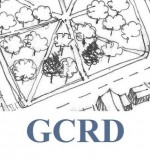Costco Taxes Grossly Overstated
In recent weeks, Costco has met with Guilford town officials, community organizations, and business leaders in an effort to muster support for its application to amend the zoning code to allow a big-box store on the Rock Pile. In the process, the company has made several highly questionable claims regarding possible tax benefits to the town.
To some people, the most compelling argument for the proposal is the $500,000 in alleged tax payments Costco is dangling in front of community leaders. Analysis by members of Guilford Citizens for Responsible Development (GCRD), vetted by a team of independent experts in real estate, commercial banking, real estate tax law, and city planning, concluded that the methodology used by Costco to justify its claims is severely flawed and the data is inadequately documented. It is certainly not the method a town assessor would use to determine value, and that is all that counts.
GCRD, with the help of experts, has been conducting its own analysis using tried-and-true real estate valuation methods. This work indicates that the Costco numbers are exaggerated by 30 to 50 percent. Costco’s claims are inconsistent with actual data from the five existing Costco stores in Connecticut and from its competitors’ stores, as well as with other comparables in Guilford.
This year, the owners of the Rock Pile property will pay approximately $75,000 in taxes on the partially improved site. To understand what Costco is adding to the town’s tax rolls, you have to subtract the amount already being paid. So even if a finished store generated $350,000 in first-year revenue (a fairly high estimate, given Guilford’s mill rate), the net increase in revenue from adding a giant big-box store would be $275,000. This is a tiny sum considering the scale of Costco’s operation, the amount of traffic the store would generate (some 3 million car trips per year, in and out), and collateral impacts on the town. Half of that potential benefit would disappear with the hiring of one extra police officer—a necessity according to national studies and actual police data from Connecticut Costco towns.
Contrary to popular belief—which Costco has been eager to promote—there is little or no evidence that big-box retailers reduce or even help control local property taxes. On the contrary, over time costs to the host town rise, creating a net deficit—essentially a public subsidy of big-box stores. Police, EMS, road maintenance, and compliance costs are rarely accurately accounted in town budgets. It is no coincidence that towns with big-box stores (including membership stores) have higher mill rates than Guilford. And many are making severe budget cuts while raising taxes.
Other forms of economic development yield far greater benefits than big-box membership stores. For example, compare the proposed Costco with the Concept Park office building on Route 1. Although its footprint is about one-tenth the size of Costco’s proposed 150,000 square feet, Concept Park generates about $120,000 in taxes every year–a four-to-one advantage. And by comparison to big-box stores, office buildings provide more and better-paying local jobs, produce negligible traffic, cost the town relatively little in police and other services, use other local businesses, and support local charities. From a true business perspective, the choice is a no-brainer.

